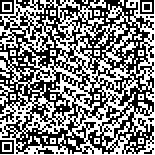尹宏伟,李海峰,张鑫,等.全身振动疗法对痉挛型双瘫患儿下肢运动功能的影响[J].中华物理医学与康复杂志,2019,41(10):752-756
扫码阅读全文

|
| 全身振动疗法对痉挛型双瘫患儿下肢运动功能的影响 |
|
| |
| DOI:DOI:10.3760/cma.j.issn.0254-1424.2019.10.008 |
| 中文关键词: 全身振动 痉挛 脑性瘫痪 运动功能 |
| 英文关键词: Vibration therapy Spasticity Cerebral palsy Motor function |
| 基金项目:国家重点专项项目(2016YFC1306205);浙江省中医药学重点学科(2017-XK-A41);浙江省中医药科技计划项目(2017ZA093) |
|
| 摘要点击次数: 6972 |
| 全文下载次数: 7077 |
| 中文摘要: |
| 目的 探讨全身振动疗法对痉挛型双瘫患儿下肢运动功能的影响。 方法 选取痉挛型双瘫患儿56例,采用随机数字表法分为治疗组和对照组,每组28例。两组均给予常规的运动康复训练,治疗组在此基础上辅以全身振动疗法,治疗频率为每周5次,每次15 min,共12周。治疗前、治疗12周后(治疗后),记录2组患儿粗大功能评定量表(GMFM-88)D区(站立)和E区(走跑跳)评分、踝关节背屈活动度(ROM)、胫前肌和腓肠肌的表面肌电信号均方根值(RMS)和Berg平衡量表(BBS)评分。 结果 治疗前,2组患儿治疗前、后GMFCS D区(站立)和E区(走跑跳)评分、踝关节主动ROM、被动ROM、被动背屈踝关节腓肠肌RMS、主动背屈踝关节胫前肌RMS、主动趾屈踝关节腓肠肌RMS、BBS评分比较,差异无统计学意义(P>0.05)。与组内治疗前比较,除主动背屈踝关节胫前肌RMS外,2组患儿治疗后GMFCS D区(站立)和E区(走跑跳)评分、踝关节主动ROM、被动ROM、被动背屈踝关节腓肠肌RMS、主动趾屈踝关节腓肠肌RMS、BBS评分均有所改善(P<0.05),且治疗组治疗后GMFCS D区(站立)[(36.3±2.6)分]和E区(走跑跳)[(44.1±11.3)分]评分、踝关节主动ROM[(9.36±4.12)°]、被动ROM[(19.64±6.15)°]、被动背屈踝关节腓肠肌RMS[(15.3±6.5)μV]、主动趾屈踝关节腓肠肌RMS[(82.8±13.6)μV]、BBS评分[(39.6±1.6)分]较为优异(P<0.05)。 结论 全身振动疗法能有效改善痉挛型双瘫患儿的下肢运动功能。 |
| 英文摘要: |
| Objective To observe the effect of whole-body vibration therapy on the lower extremity the motor function of children with spastic diplegia. Methods Fifty-six children with spastic diplegia were randomly divided into a treatment group and a control group, each of 28. Both groups were given routine rehabilitation exercise training, while the treatment group was additionally provided with 15 minutes of whole-body vibration therapy every day, 5 days a week for 12 weeks. Their GMFM-88 D (standing) and E (walking and jumping) scores were recorded before and after the treatment along with the active and passive range of motion of the ankle in dorsiflexion, and the root mean square surface electromyogram signals from the tibialis anterior and gastrocnemius muscles. Berg balance scale scores were also assigned before and after the treatment for both groups. Results There were no significant differences between the two groups before the treatment. Afterward all of the evaluations except the signals from the tibialis anterior muscle in active ankle dorsiflexion had improved significantly. The improvements were all significantly better in the treatment group. Conclusion Whole-body vibration therapy can effectively improve the lower extremity motor function of children with spastic diplegia. |
|
查看全文
查看/发表评论 下载PDF阅读器 |
| 关闭 |